Pot lids: selection and storage
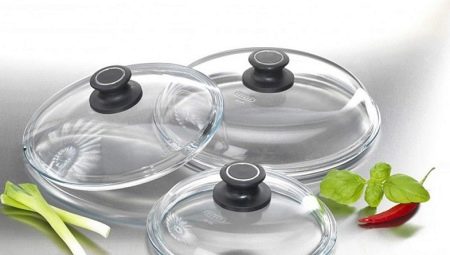
The lid is an inseparable companion of the pan. It retains moisture inside it, which does not allow the dish to dry out - it turns out to be juicy and aromatic. And also the cooking process is accelerated.
The lid is usually included with the pot. But at the request of the hostess, she can additionally purchase a more convenient accessory.
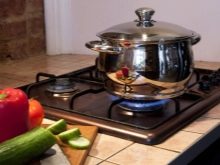
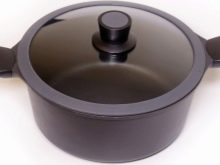
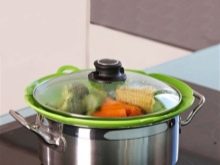
How to choose?
Usually, choosing a lid for a saucepan is not difficult. All manufacturers of these utensils use standard sizes. Based on them, the diameter of the covers ranges from 16-32 cm with a step of 2 cm.
If the utensil has non-standard parameters, then the cover, as a rule, must be included in the kit.
The most common lids are glass and stainless steel. They are considered versatile, very easy to use, do not affect the taste of food, and are easy to care for.
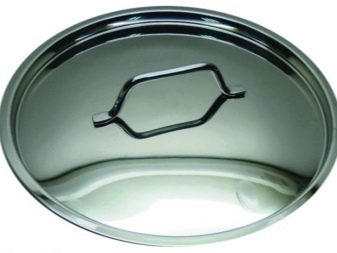
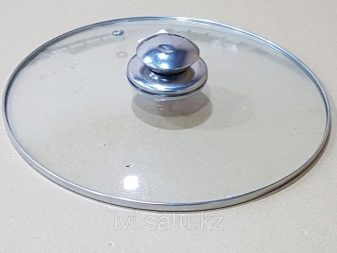
The advantage of glass lids is the visibility of food during cooking - even if the pan is covered, the dish is still clearly visible.
The glass product is perfectly washable, being cleaned even in the dishwasher. It can be used in microwave ovens. The glass keeps the temperature perfectly.
But there is also a minus - increased fragility.
When choosing a glass lid, pay attention to its rim. His presence is encouraged as he:
- reduces sliding and friction of the product against the sides of the pan;
- provides a snug fit;
- keeping the glass in a strong rim reduces its trauma.
The bezel is made of stainless steel or silicone. If it is absent, then the product must be made of extra strong glass.
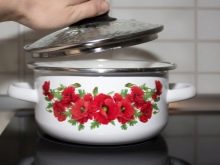
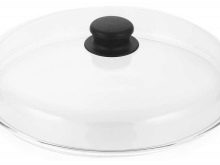
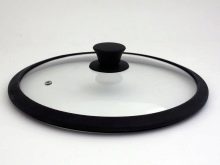
The steel cover is more durable and less fragile.But on the other hand, it retains heat worse. And, having covered the pan with it, you will not be able to observe the cooking process, since it is opaque. It is contraindicated for microwave ovens.
A variation of the universal lid is the can sterilization accessory. It can be either glass or steel. It is distinguished from a regular product by a hole in the center corresponding to the size of the can. Placing it over boiling water in a saucepan, a jar is inserted into the hole, which is sterilized by the steam generated when the water boils. This is simply an irreplaceable thing for those who are seriously engaged in conservation.
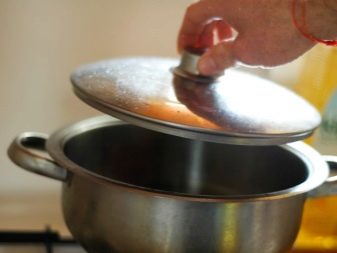
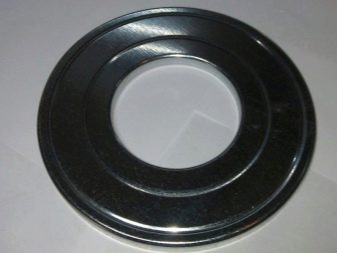
Non-standard solutions
In addition to the standard materials - glass and steel, other materials are used for the manufacture of lids. For example, ceramics. But you can use such a product exclusively for a saucepan made of the material of the same name. It has an attractive appearance, is easy to clean, and is suitable for ovens and microwaves. But he is afraid of sudden changes in temperature.
Wooden lids are environmentally friendly but impractical. Considering that wood is afraid of moisture, the use of such products is strictly limited. They are either covered with ready-made dishes, or used for cooking pilaf, stews and other dishes where the amount of liquid is minimal. Compatible with cast iron pans.
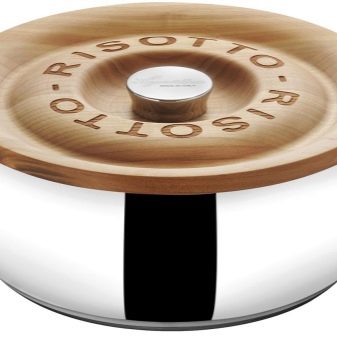

The silicone cover requires special attention - non-boiling. This is just a godsend for any housewife. Its name speaks for itself: it prevents liquid from escaping from the pan. Its structure causes the frothy cap to collect on the surface of the lid, and the water flows back into the container. This keeps your cooker perfectly clean at all times. With the help of this technology, it is convenient to boil milk, boil broths and other liquid dishes.
It operates at the maximum temperature, which allows you to speed up the cooking process. With this non-spill lid, you can have peace of mind even if you have to leave the stove unattended.
Its benefits do not end there. The silicone "hood" easily turns into a double boiler, if you put it on a pot of water, put food in it, and cover it with a lid. When storing plant foods in the refrigerator, the silicone lid will keep it fresh and turgid for a long time. In care, it is obscenely simple: it is easy to clean even in the dishwasher.
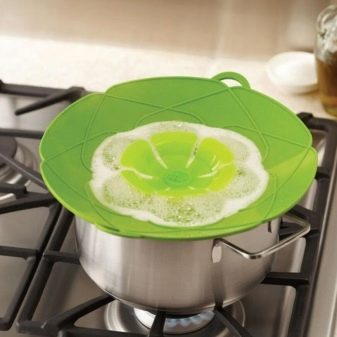
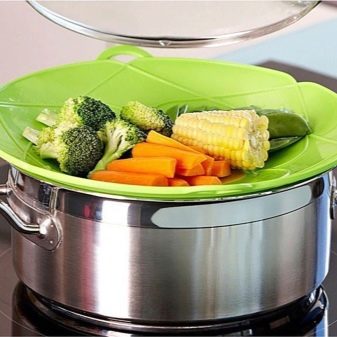
What should you pay attention to?
When choosing lids for saucepans, you should initially take into account the material from which they are made. It is the quality of the material that affects the service life of the product and the taste of the cooked food.
However, there are smaller details that also play a role in the operation.
- Handle material. Look for products with a silicone or bakelite handle. They practically do not heat up, which makes it possible to take them with bare hands. The same cannot be said about steel heating up too quickly.
- Correspondence of the size of the pan and the lid, tightness when closed.
- A hole in the surface of the glass lid to allow steam to escape.
- The presence of a protective rim.

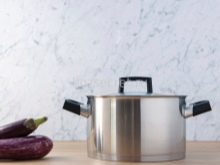
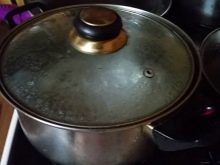
How to store?
Since lids are often used in the cooking process, they should be easily accessible for the hostess. But still, they must be arranged in an orderly manner so as not to drop and not create a lot of noise when removing them.
We pay special attention to the storage of glass lids, as they are very fragile.
There are many ways to store lids. We accept the old grandfather's method - together with a saucepan. But modern trends are making their own adjustments. There are a variety of tools to help you organize all your lids:
- horizontal stands for perfect visibility of all accessories;
- vertical holders with dividers - they are installed in drawers, on a table or hung on a wall;
- railing - a vertical stand, the holders of which can change position;
- on the cabinet door, where hooks, strips, holders are attached;
- pull-out shelves built into furniture;
- dryers;
- organizers.
Caps are thoroughly cleaned and dried well before being sent to storage. Store products only dry.
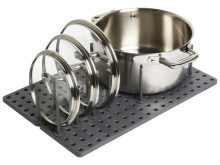


A wide variety of storage methods for pot accessories will allow you to choose the best option for your individual kitchen, whether it is a spacious or small space.
For information on how to store pot lids, see the video below.








